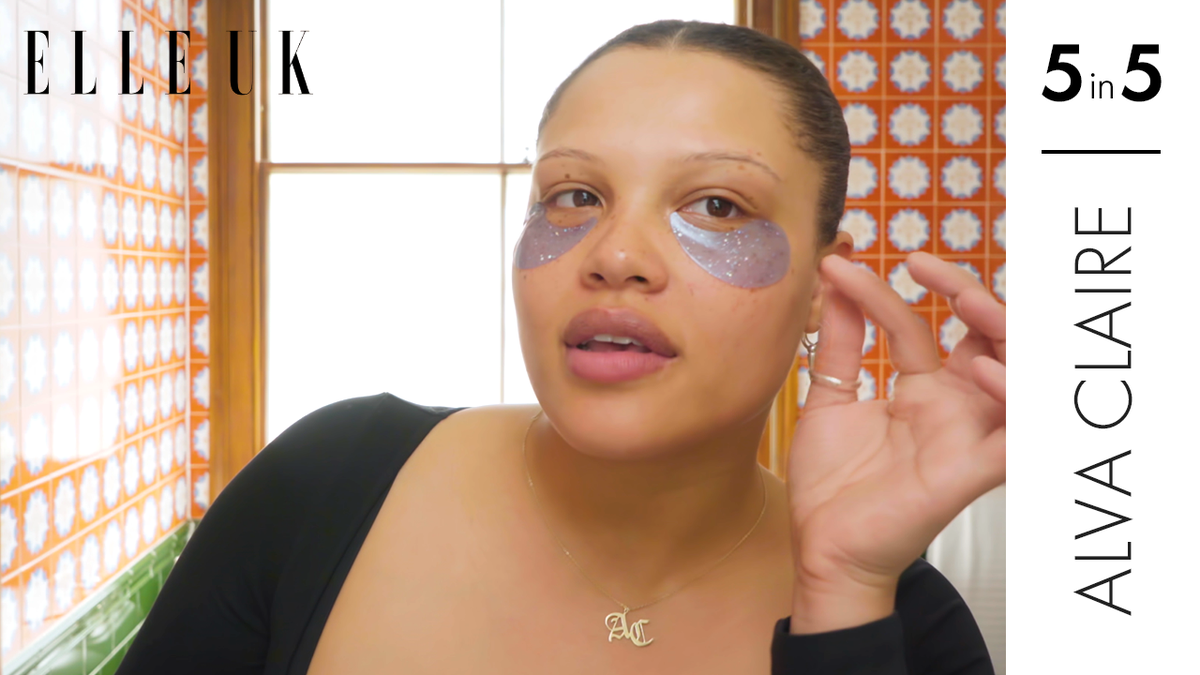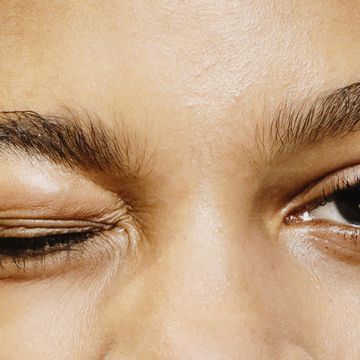For 26-year-old performer Jay Jay Revlon, nail salons have always been dangerous places.
‘I used to feel so uncomfortable,’ the Peckham native says, thinking back to his first few manicure appointments. ‘Not because of the staff, but because of the other women getting their nails done… They’d all turn and look… It was like, “Shock horror! There’s a guy getting his nails done!”’
This subtle hostility began to wear Revlon down, and – as a qualified nail technician himself – he decided to come up with a solution. The result was ‘Guys That Nail It’: a pop-up beauty salon made exclusively for men, which took up residence on the top floor of a South London pub last month.
Revlon was given the space – which offered manicures and pedicures, with optional polish – for just two weeks. But, that was more than enough time for word to spread. Within days of opening, the salon was getting booked out by men of all ages, races and sexualities, who were keen to try out the procedures for the first time, free from judgement.
‘I’ve had lighting technicians, people that work in the city, people that work in broadcasting, teachers, people in PR…’ Revlon says, reeling off his growing client list. ‘It’s crazy.’
The concept of the all-male beauty salon is nothing new. In the more high end corners of the UK, these kinds of venues have been opening in a steady trickle since the late 90s. It’s only in the last ten years, though, that the floodgates have really opened. Now, men-only salons are becoming a staple of the British high street, with more and more venues opening to satiate the growing aesthetic appetites of the modern man. Even Barber shops – staunch bulwarks of traditional masculinity – are increasingly having to widen their service list to include facials, botox, manicures, pedicures and ‘manscaping’ hair removal treatments.
‘In 2007, men had the choice of going into the centre of town to visit one of two men-only salons (which were luxurious but intensely intimidating) or go to the salon that their wife or girlfriend went to (equally intimidating but for different reasons),’ explains Bharat Parmar, founder of London salon chain Genco Male Grooming.
‘We wanted to make beauty treatments more accessible, by making them available on the local high street, and also in an environment which was friendly, laid-back and non-judgemental.’
The meticulously groomed, alpha look – made popular by the likes of David Beckham and Tom Ford – has always been desirable for men. But up until the last few years, the procedures that helped obtain it were rarely discussed, and not very accessible. Instead, men who plucked their brows, groomed their hands, and manscaped their bodies were seen as outliers to mainstream culture, falling into fringe groups like the super-rich, the gay community, or the hyper-masculine ‘lads’ of Geordie Shore and TOWIE.
Now, though, these men are the mainstream. Thanks to increased awareness and accessibility, metrosexual culture is thriving – with the global male grooming industry is now worth an estimated $50 billion. According to Euromonitor, since 2010, men’s beauty has even been outpacing the gargantuan women’s industry, with some high-end retailers reporting up to 300 per cent growth in men's beauty and grooming sales.
So what has happened in the last few years to warrant this surge? Why now, specifically? ‘The growth of the male beauty field corresponds with a softening of men and their gender more broadly,’ muses Eric Anderson, professor of masculinity, sexuality and sport at the University of Winchester. ‘If there is anything that millennial men, particularly, are characterised by it is that they no longer subscribe to many of the old-school ways of being masculine. In the past it was homosexuality that was stigmatised, today it’s homophobia. This permits young straight men to act in ways that were previously negatively associated with homosexuality.
‘Self-care is part and parcel to this. Whereas men used to be presumed gay for caring too much about how they looked, these days skinny jeans, trimming and waxing are in for all men, regardless of sexual orientation.’
While women have been bearing the brunt of extreme and unattainable beauty standards for centuries, the notion that men will start to share some of the load marks – on the surface at least – a welcome change. But there are concerns that it might not all be as simple as that.
For Rosalind Gill, professor of cultural and social analysis at University of the Arts London, any challenges to the rigid constructs of masculinity are welcome – but she worries that this new wave of men-focused beauty could develop into something more sinister. She argues that, while shifting stifling appearance pressures on to men may help them understand women’s struggles, it’s actually not helpful for any gender in the long run. It would better if these pressures stopped existing entirely.
‘Personally, as someone who researches appearance pressures, I find the trend quite worrying,’ she says. ‘Some feminists have argued we are moving into an era of “equal opportunities objectification” – so that instead of challenging the endless pressure to work on every aspect of our bodies, we are just seeing it extended to men. I’m worried this could lead to more body image disorders among men.’
Gill’s pessimism isn’t helped by the rising popularity of more extreme beauty treatments among men. According to Genco Salon owner Parmar, the demand for advanced services such as laser hair removal, body-sculpting and fat freezing is soaring, with botox – or ‘brotox’ – now a regular on many salon menus. The burden to look youthful, wrinkle-free and entirely hairless is steadily getting heavier, only now it’s now both women and men who are expected to take the weight. ‘There already is a rise in the number of male grooming salons that offer advanced treatments, and this will continue,’ says Parmar, confidently.
Whether or not these more extreme procedures do become normalised, the growing success of the men’s beauty industry shows no sign of slowing. And as society’s views on gender become even more open and fluid, so too does the beauty industry’s target market. Now, brands have the chance to substantially widen their audience – and if the opportunity is there, there’s no doubt they’ll do whatever it takes to monopolise on it.
‘The male beauty industry will continue to grow,’ Parmar predicts, when asked what the future holds. ‘The trick is that the beauty industry has to provide a male-friendly service environment and approach, which requires discretion and sensitivity.’
And, despite Gill’s concerns, the salon owner doesn’t believe this brave new world will be a bad thing for men. Instead, he views it more as an opportunity. ‘Being well groomed can be a sign of maturity as it reflects to the outside world how a man views himself. It comes across as disciplined, confident and respectful rather than vain and self-obsessed,’ he adds. ‘I will always do what's required to make sure that I look and feel my best.’















